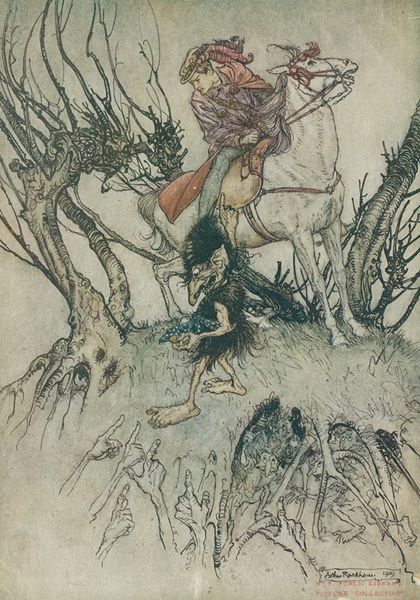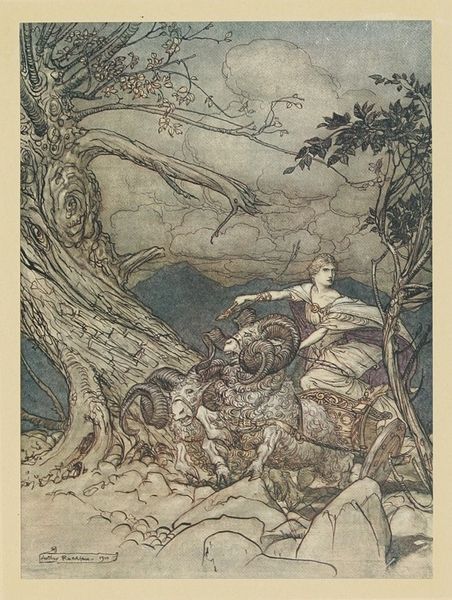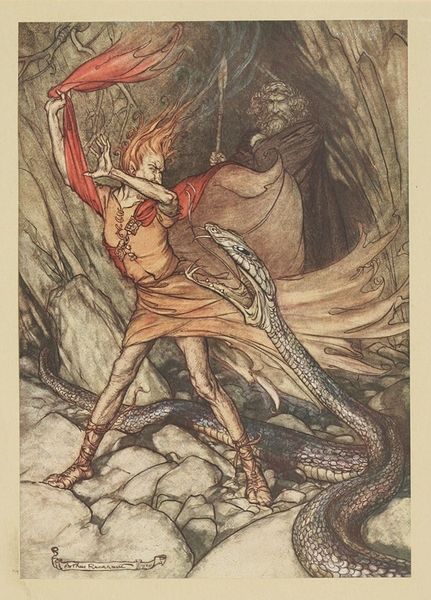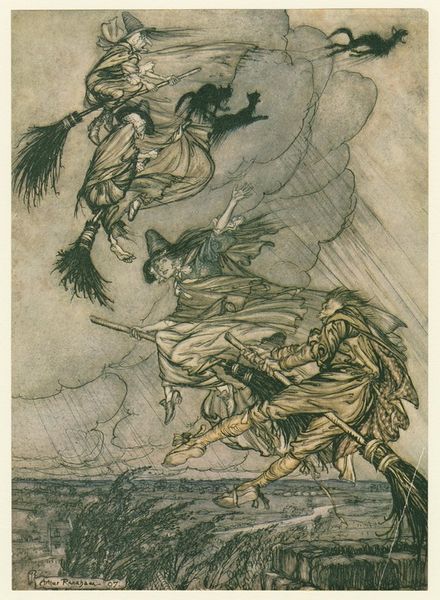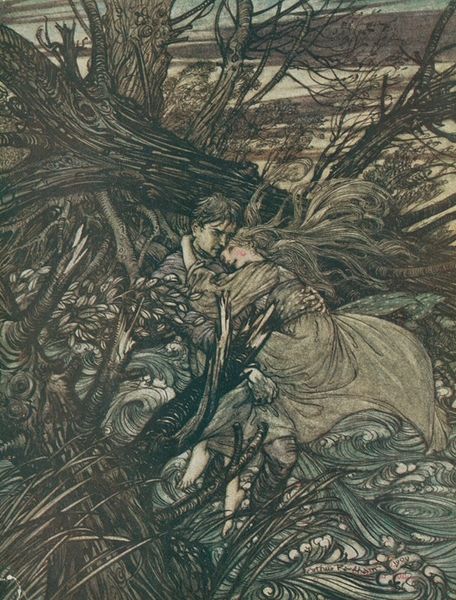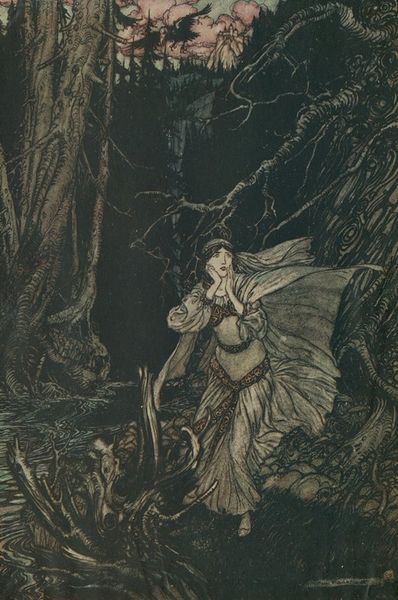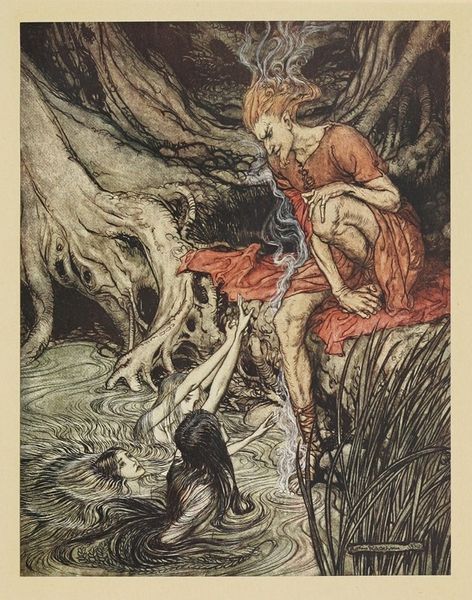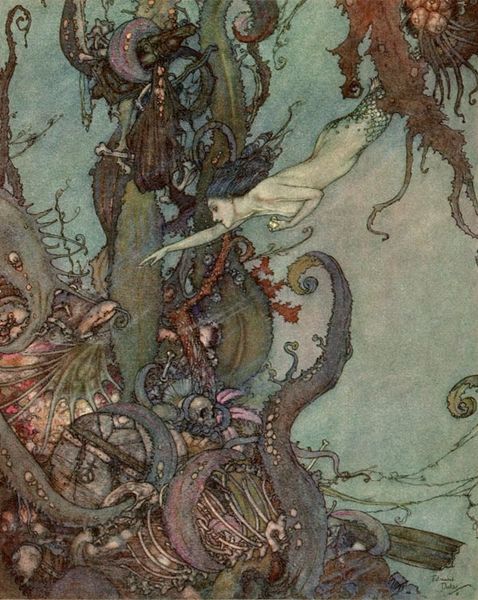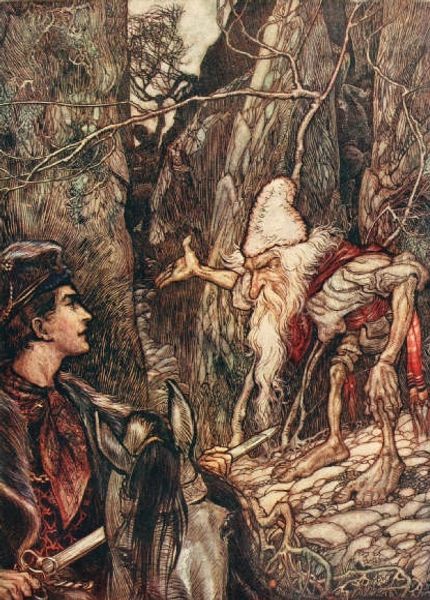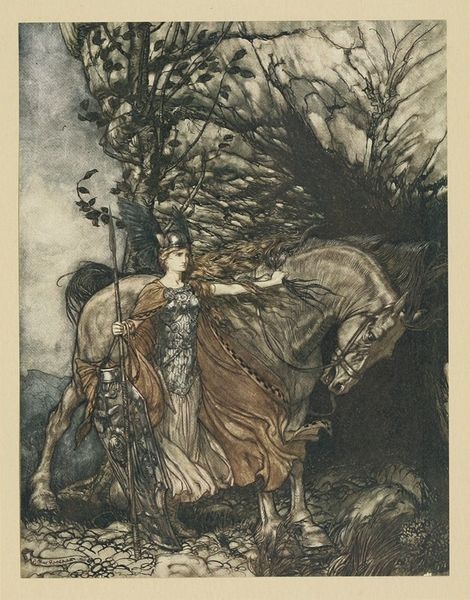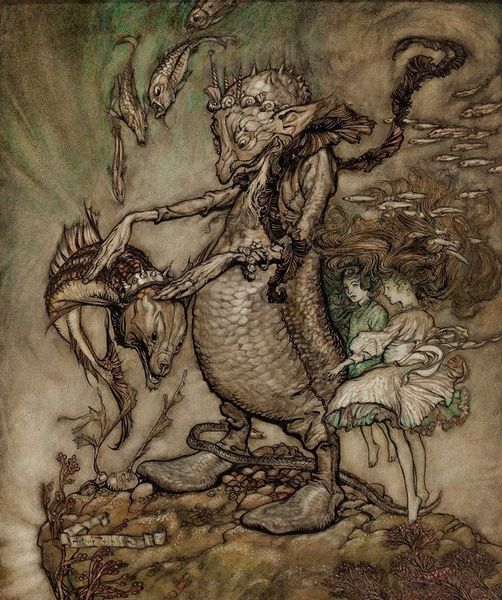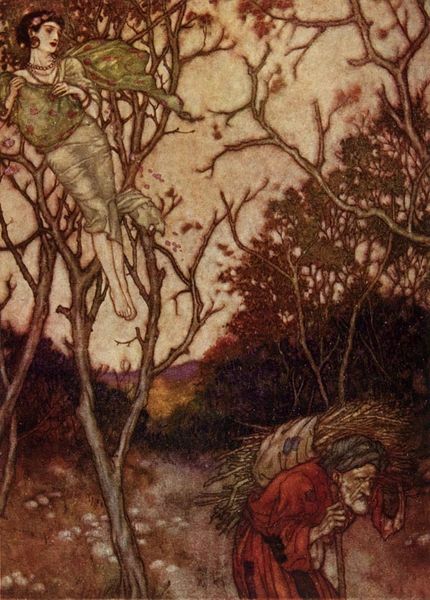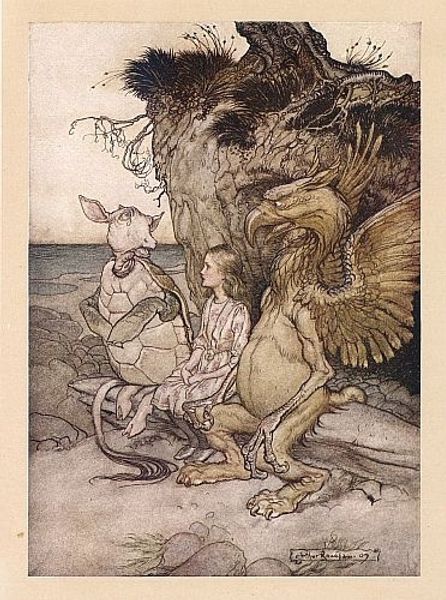
He held up the gold piece, crying at each leap of his, ‘False gold! false coin! false coin!’ 1912
0:00
0:00
drawing, watercolor, ink, pen
#
drawing
#
narrative-art
#
ink painting
#
landscape
#
figuration
#
watercolor
#
ink
#
symbolism
#
pen
#
watercolour illustration
#
watercolor
Copyright: Public Domain: Artvee
Editor: Arthur Rackham’s pen, ink and watercolor drawing from 1912, "He held up the gold piece, crying at each leap of his, 'False gold! false coin! false coin!'" creates such a dark, unsettling atmosphere. What do you see in this piece that might unpack its deeper meaning? Curator: The piece resonates with a potent critique of capitalism and moral decay, especially within the context of the early 20th century marked by increasing industrialization and social inequality. Rackham uses symbolism tied to folklore to talk about modern societal issues, I think. Look at the forest, how it seems to almost swallow the rider. What could that represent? Editor: Oppression? Curator: Precisely! Oppression but also being trapped within systems of power. Consider also the notion of 'false gold.' This alludes not just to monetary corruption, but also the false promises of wealth. Gold and wealth often get gendered feminine within mythology. Could that have something to do with the “false coin?” Editor: It suggests how capitalist systems may exploit feminine ideals or even female-presenting persons, promising wealth while delivering deception and potentially, harm? Curator: Exactly. Rackham uses his art as social commentary, questioning who truly benefits from systems that prioritize profit over integrity. Who has access? Who is denied access? And further, what might the environmental decay portrayed mean when connected with this critique? Editor: So it is almost like he is setting up how wealth can be tied to the devastation of both people and the environment. Is that about right? Curator: Precisely, viewing this work, through the lens of contemporary intersectional environmentalism and feminist economics enriches our understanding. We are prompted to ask: Who are the contemporary equivalents of Rackham's desperate rider, and what "false gold" are they pursuing? Editor: I am viewing Rackham's art with a fresh understanding! Curator: Agreed, by acknowledging historical and cultural contexts, this piece remains very relevant today.
Comments
No comments
Be the first to comment and join the conversation on the ultimate creative platform.

